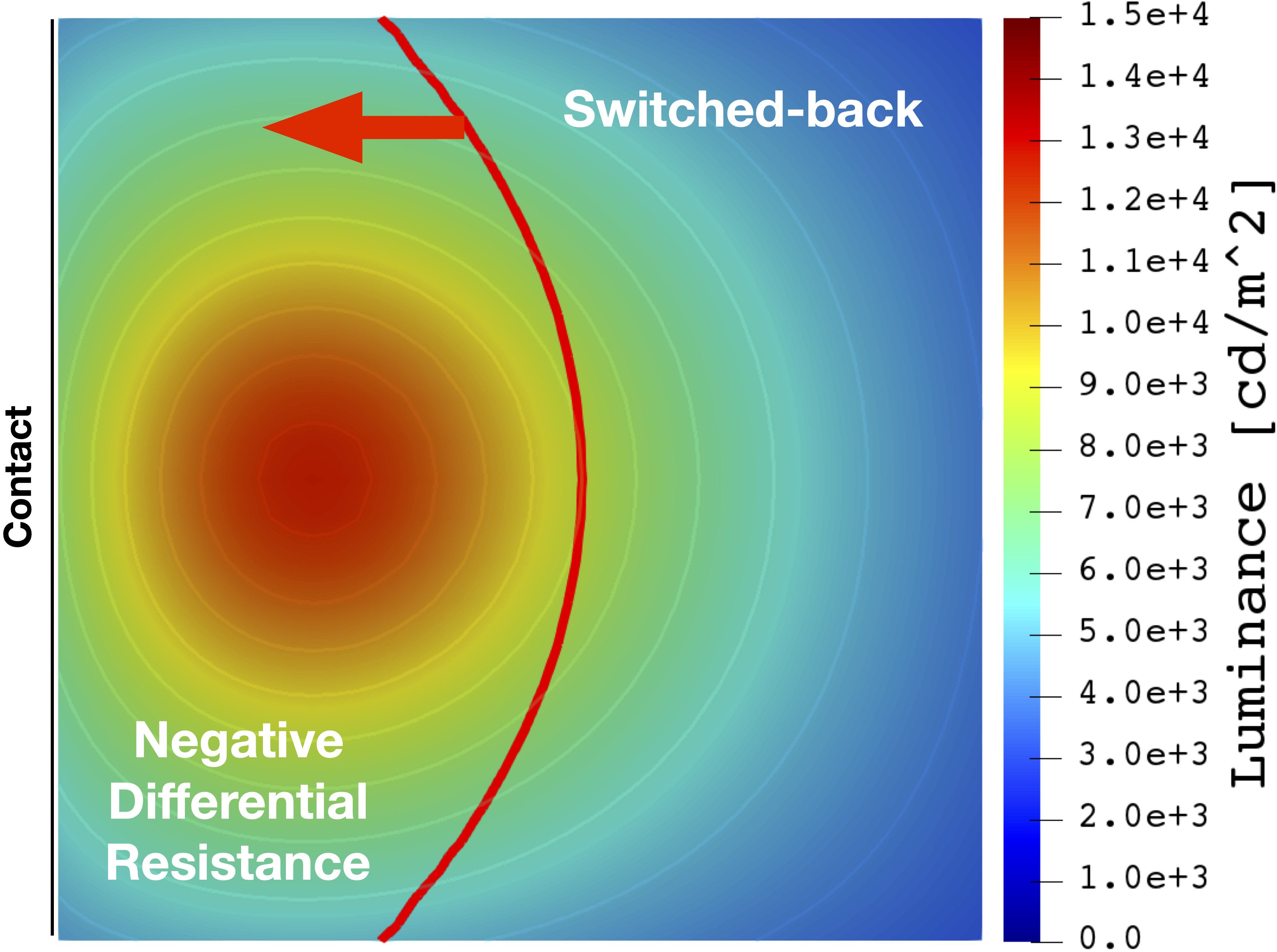Hot OLEDs can "switch back"
Due to their fascinating properties, organic light-emitting diodes (OLEDs) are increasingly used in devices such as
smartphone displays or television screens. Large-area OLEDs are also becoming increasingly interesting for new lighting
concepts. For the design of such components, the non-linear effect of the self-heating of the materials as well as a
resulting switch-back effect must be considered appropriately. Researchers from the TU Dresden and the Weierstrass
Institute recently published a paper on
Experimental proof
of Joule heating-induced switched-back regions in OLEDs in the renowned scientific journal
nature research -
Light: Science & Applications (2-year impact factor: 14.000, 5-year impact factor: 15.132).
Figure: Luminance in a large-area OLED. Due to the interplay of current flow and self-heating,
regions with negative differential resistance and "switched back" behavior are forming in the OLED (luminance decreases
despite increasing supplied currents)..


